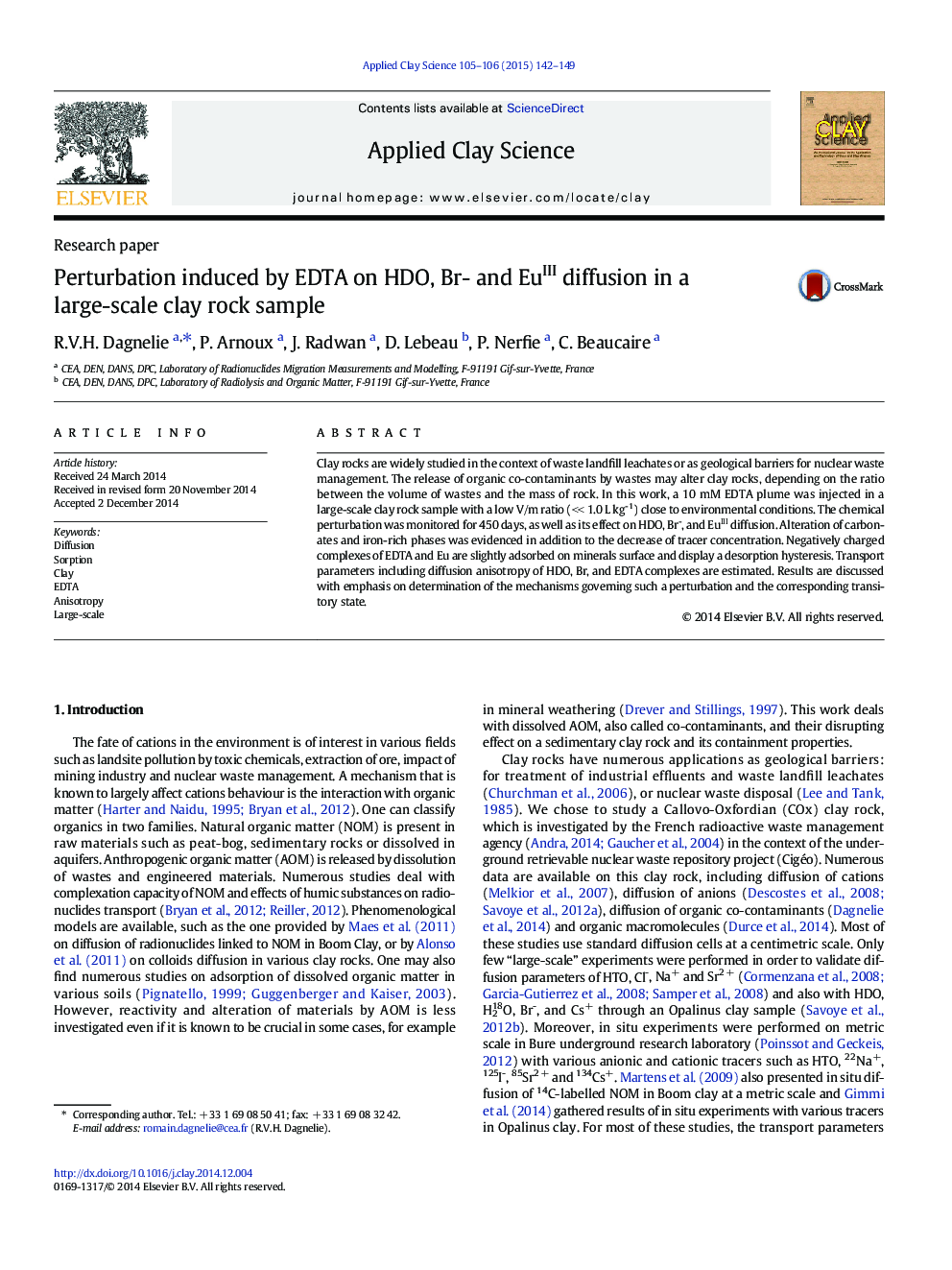| Article ID | Journal | Published Year | Pages | File Type |
|---|---|---|---|---|
| 1694570 | Applied Clay Science | 2015 | 8 Pages |
•A large-scale clay rock sample was perturbed by a 10 mM EDTA plume for 450 days.•Dissolution of carbonates (fast) and iron-rich phases (slow) was monitored.•Perturbation modified speciation equilibrium but had a limited effect on transport.•Transport parameters of HDO, Br, EDTA, Eu, including anisotropy were quantified.•EDTA and Eu-EDTA complexes displayed a strong desorption hysteresis.
Clay rocks are widely studied in the context of waste landfill leachates or as geological barriers for nuclear waste management. The release of organic co-contaminants by wastes may alter clay rocks, depending on the ratio between the volume of wastes and the mass of rock. In this work, a 10 mM EDTA plume was injected in a large-scale clay rock sample with a low V/m ratio (<< 1.0 L kg- 1) close to environmental conditions. The chemical perturbation was monitored for 450 days, as well as its effect on HDO, Br-, and EuIII diffusion. Alteration of carbonates and iron-rich phases was evidenced in addition to the decrease of tracer concentration. Negatively charged complexes of EDTA and Eu are slightly adsorbed on minerals surface and display a desorption hysteresis. Transport parameters including diffusion anisotropy of HDO, Br, and EDTA complexes are estimated. Results are discussed with emphasis on determination of the mechanisms governing such a perturbation and the corresponding transitory state.
Graphical abstractFigure optionsDownload full-size imageDownload as PowerPoint slide
